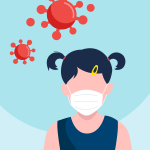What are skin lesions?
Skin lesions are lumps found on or just below your skin. Examples of skin lesions are sebaceous cysts (also called epidermal inclusion cysts or epidermoid cysts), lipomas, skin tags (also called acrochorda) and moles.
What are the benefits of surgery?
Most skin lesions can be safely left alone. You may want the skin lesion removed for cosmetic reasons or to be reassured that it is not a cancer.
Are there any alternatives to surgery?
Surgery is the only reliable way to remove skin lesions but you may simply leave them alone.
What will happen if I decide not to have the operation or the operation is delayed?
Sebaceous cysts can be left alone and often cause no problems at all. Some may grow in size. Sometimes the contents of sebaceous cysts leak out or they can become infected, needing antibiotics or surgery.
Lipomas tend to grow in size if they are left alone. As they get larger they appear more obvious and can interfere with clothing. Sometimes lipomas on the inside of the upper arm or thigh may rub during movement and cause irritation or pain.
If you experience any of the following symptoms, contact your healthcare team.
- The lump growing quickly.
- New or worsening pain.
- Redness over the lump.
- If you have a mole and it becomes itchy, starts bleeding or changes appearance.
What does the operation involve?
The operation is usually performed under a local anaesthetic.
The operation usually takes 15 to 25 minutes.
When removing a sebaceous cyst, your surgeon will try to remove it whole as this makes sure that none of the cyst wall is left behind and prevents it from coming back. Your surgeon will make an elliptical (oval) cut over the cyst and then cut out the cyst.
To remove a lipoma, your surgeon will make a straight cut on your skin directly over it. The lipoma is freed up from the tissues around it and removed.
A skin tag can simply be numbed with local anaesthetic and then removed.
When removing a mole, your surgeon will cut all the way around it using an elliptical cut.
How can I prepare myself for the operation?
If you smoke, stopping smoking now may reduce your risk of developing complications and will improve your long-term health.
Try to maintain a healthy weight. You have a higher risk of developing complications if you are overweight.
Regular exercise should help to prepare you for the operation, help you to recover and improve your long-term health. Before you start exercising, ask the healthcare team or your GP for advice.
What complications can happen?
General complications of any operation
- bleeding
- infection of the surgical site (wound)
- allergic reaction to the equipment, materials or medication
- wound breakdown
Specific complications of this operation
- a lipoma or a sebaceous cyst can come back
- damage to nerves that supply your skin
- you may need a larger operation
Consequences of this procedure
- pain
- unsightly scarring of your skin
How soon will I recover?
After a short while you will be able to go home.
You should be able to return to work the next day unless your work will place a strain on the stitches. It is unusual for these procedures to restrict any daily activities you carry out.



